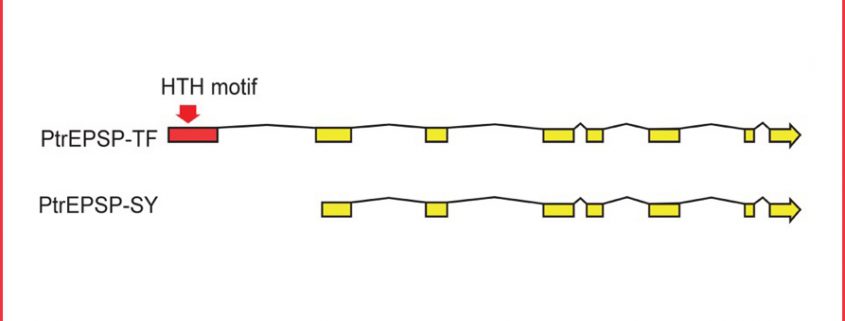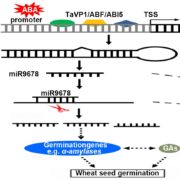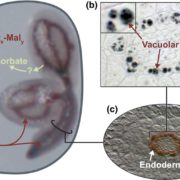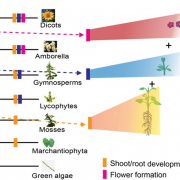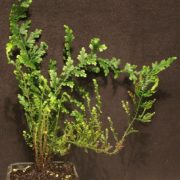Old Gene, New Function
Xie et al. discover an EPSP synthase gene involved in the transcriptional regulation of the phenylpropanoid pathway in Populus trichocarpa The Plant Cell (2018). https://doi.org/10.1105/tpc.18.00168.
By Meng Xie, Wellington Mechuro, Jin-Gui Chen, and Gerald A. Tuskan
Background: 5-enolpyruvylshikimate 3-phosphate (EPSP) synthase is an enzyme existing in plants and microorganisms. EPSP synthase catalyzes the sixth reaction of the shikimate pathway, which is an important primary metabolic pathway to produce aromatic amino acids. EPSP synthase is indispensable for plant growth. An herbicide glyphosate has been developed to shut down the shikimate pathway by inhibiting EPSP synthase activity. In the past decades, EPSP synthase was thought to only have the enzyme function. In the woody plant poplar, we found one EPSP synthase (PtrEPSP-TF) with an additional motif. This motif is named helix-turn-helix (HTH) motif and has a potential DNA binding activity. The appearance of HTH motif in PtrEPSP-TF may introduce new function.
Question: We wanted to know if PtrEPSP-TF has additional molecular functions besides the enzyme activity. We also want to know if PtrEPSP-TF is involved in other biological processes different from the shikimate pathway.
Findings: We found that, in addition to the enzyme activity, the purified PtrEPSP-TF has a DNA binding activity. Using short fragments of PtrEPSP-TF, we found that the DNA binding activity depends on the HTH motif. In isolated poplar leaf cells (protoplasts), PtrEPSP-TF could accumulate in the nucleus and act as a transcription repressor to suppress the transcription of its target gene. In poplars overexpressing PtrEPSP-TF, we observed the activation of the phenylpropanoid pathway, which produces numerous important secondary metabolites for plant growth and defense. To connect the new transcription function and the effect on the phenylpropanoid pathway, we discovered that via a hierarchical regulation, PtrEPSP-TF eventually could activate the expression of PtrMYB021, a master activator of the phenylpropanoid pathway.
Next steps: The additional HTH motif is critical for the new function of PtrEPSP-TF. However, the HTH motif is missing in non-vascular, algal and monocot EPSP synthases. How the EPSP synthase in woody plants obtained the HTH motif during the evolution is what we are going to explore.
Meng Xie, Wellington Muchero, Anthony C Bryan, Kelsey L Yee, Hao-bo Guo, Jin Zhang, Timothy Tschaplinski, Vasanth R Singan, Erika Lindquist, Raja S Payyavula, Jaime Barros-Rios, Richard A. Dixon, Nancy Engle, Robert W Sykes, Mark Davis, Sara Jawdy, Lee E Gunter, Olivia Thompson, Stephen P DiFazio, Luke M Evans, Kim Winkler, Cassandra Collins, Jeremy Schmutz, Hong Guo, Udaya Kalluri, Miguel Rodriguez, Kai Feng, Jin-Gui Chen, Gerald A Tuskan. (2018). A 5-enolpyruvylshikimate 3-phosphate synthase functions as a transcriptional repressor in Populus. Plant Cell. Published June 2018. DOI: https://doi.org/10.1105/tpc.18.00168
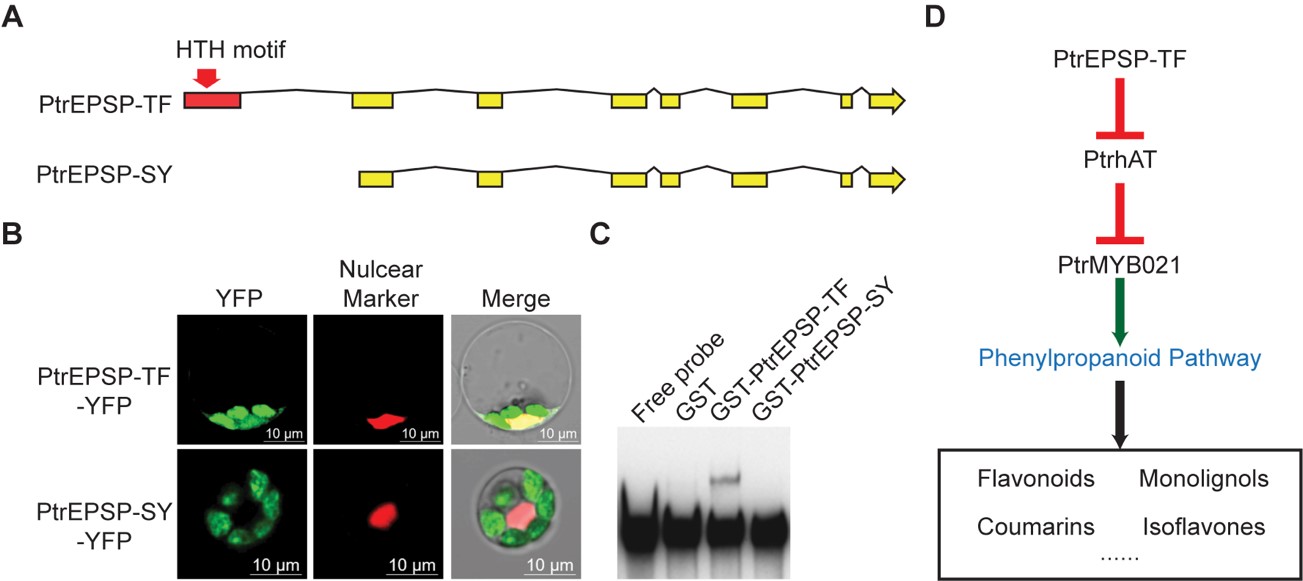
PtrEPSP-TF has an additional HTH motif (A). PtrESPS-TF accumulates in the nucleus (B) and has DNA binding activity (C). PtrEPSP-TF transcriptionally regulates the phenylpropanoid pathway (D).
Keywords: EPSP synthase, poplar, phenylpropanoid, transcription


